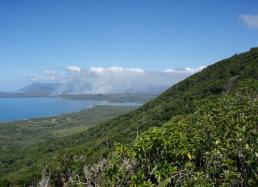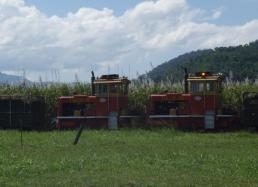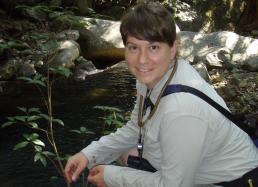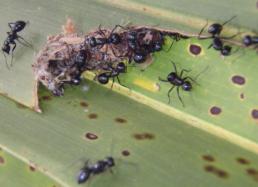About the Expedition
Most of us think of Australia as being dry and desert-like, but in fact, it harbors some of the oldest rainforests in the world! Called the Australian Wet Tropics (AWT), these rainforests date back millions of years to a time when Australia was still part of the lush supercontinent of Gondwana.
As this supercontinent broke apart, the climate began to dry, causing these primeval rainforests to shrink and become the small pockets that still survive in a handful of locations around the globe. Today, these habitats form refuges for many living plants and animals with ancient histories—including some species that remain relatively unchanged from their fossil ancestors!
Ants & Rainforest Conservation
Although much of Australia's remnant rainforests are currently protected, human activities—especially the cultivation of sugarcane and bananas—are resulting in habitat loss. The AWT is beginning to shrink and experience subdivision into smaller pockets, just as it did during ancient times.
So how do ants fit into the picture? They're vital to habitat health in the AWT. Not only do ants turn more soil than earthworms, kill pest species that harm vegetation, and disperse the seeds of many plants, but they can can also help us understand and mitigate the effects of global warming. How? Ants have a long and diverse evolutionary history, which means their DNA holds a record of how climate change and geologic events have impacted life on our planet over time.
Expedition Goals
During a series of expeditions to the AWT, Dr. Corrie Moreau will be collecting and mapping out the distribution of various ant species throughout the rainforest. Then, back in The Field Museum's DNA Pritzker Laboratory, she'll sequence the ants' DNA, create a timeline of the peaks and dips in ant diversity, measure the effects of habitat disturbance on ant populations, and test theories on how climate barriers may have obstructed gene flow between species throughout their long histories.
The results of these research projects can be used to create a model for how ants and related species living today—such as wasps, bees, and other pollinators—will likely respond to climate change, and where in each ecosystem species extinction is likely to occur first and most dramatically. Armed with this information, conservationists can design preservation strategies that more accurately target areas facing the greatest threats from global warming today.
Spiny Ants & Climate Change
Although Dr. Moreau samples many ant species throughout the AWT, one focus of her current research is spiny ants (Polyrachis sp.) Ants in this group can be found living in a huge variety of microhabitats—in the soil, in rotten logs, and in the rainforest treetops or canopy—which makes them good candidates for tracing how climate change has affected their survival and diversity over time in each environmental niche.
So far, her research has shown that during drier climatic cycles, the diversity of tree-dwelling spiny ants dwindles to only a few species. However, ground-dwelling species appear to dig their nests deeper, surviving and even diversifying in harsh conditions, perhaps due to better access to ground water. Further studies on these and other ant groups will help Dr. Moreau and her team identify which traits and strategies help ensure the perpetuation of a species.
To learn more about the fascinating world of ants and their evolution, explore the stories in "About the Expedition," and be sure to check out Dr. Moreau's photo galleries, videos, and blogs from her 2010 expedition.





